I’ve had a few people ask about my AI-generated artwork. So I thought I’d write a post. If of interest, I recommend clicking into and opening this in Substack direct (or you’ll be looking at pixelated images on email version). Thread of the below also here on X: https://x.com/EdwardMDruce/status/1920392960778154231
1. Ukraine-Russia conflict. The below is the first meaningful AI image I created. And it came with almost the first prompt entered. Beginner’s luck. It was something as simple as “Ukraine flag in the style of Rothko” – and this came out.
For me, it’s come to depict the tragedy of the war. The chaos and violence of it; the non-zero risk of severe escalation (note the beginnings of a mushroom cloud); the intrusion of Russian red to the lower East, coming to occupy the canvas; yet a sense of valour shining through – misguided though I consider much Western policy (at large) has been.
To me, this image says, “things didn’t have to go this way”.
2. A Korean-style armistice, with EU accession for Ukraine. When I started reading about the 1953 Korean Armistice, I was struck by the parallels. A three-year war, with an “intransigent” leader the United States was trying to back, who’d had to enact martial law to postpone domestic elections, and a Republican President coming to power campaigning forcefully on ending the slaughter.
It was a conversation between Professor Stephen Kotkin and Gita Wirjawan that first put the analogy into colour for me. The more I looked into the history of how the Armistice was negotiated, the more apt I thought the comparison.
Many have since come to use it. It’s a shame more didn’t sooner – when Ukraine (and the West) had greater negotiating leverage. South Korea would not have been the worst role model for Ukraine – and mightn’t yet be.
3. Did the West betray Ukraine? My colleague Sang-Hwa Lee next undertook a two-month research project looking into exactly how the 1994 Budapest Memorandum agreement came to be. Why are there miscommunications about this still to this day? It turns out, the document – translated in English, Ukrainian and Russian – (intentionally) uses different wording: “security assurance” (a meaningless epithet) in the American English version, and “security guarantee” in the Ukrainian. Negotiators at the time recognised this was the only way to square the circle and get the world’s third largest nuclear weapons stockpile out of nascent Ukraine. An enlightened move then, but lost, as so much subsequently is, to history since.
The artwork here depicts propaganda around the agreement. Almost every time the Budapest Memorandum is cited in Western media, its significance is misstated (making it out to be much greater than the non-committal few pages it was). The Ukrainian Parliament, in turn, is nowhere near this grand.
Yet, at the same time, an undeniable sense that Ukraine has been “left out in the cold” (the tanks outside the window).
Both of these things are true.
4. Who owned the nuclear weapons? This led us to our next question: who actually “owned” those nuclear weapons? Following the dissolution of the Soviet Union, warheads were housed in what became Ukraine, but all command and control remained in Moscow.
Professor Kotkin, arguably the world’s leading Soviet scholar, kindly replied to Sang-Hwa with an emphatic:
“Ukraine did not give up ‘its’ nuclear weapons. Ukraine had no such weapons. Russia had nuclear weapons on Ukrainian soil. Ukraine gave up Russia’s ability to fire nuclear weapons from the territory of Ukraine. Command and control was always in Moscow. It is absurd that this point is not a given in public discourse.”
But Harvard’s Dr. Mariana Budjeryn vehemently disagrees.
We argued both their positions, as forcefully as we could – in one piece.
There’s no definite answer, but it’s a fascinating debate. Our eruptive question mark captures the tension.
5. An MIT physics professor’s little-known finding that could help a new US Administration refresh relations with Russia.
Professor Theodore A. Postol is something of a legendary figure who, throughout his career, has discovered all kinds of classified projects that countries have been trying to hide. (And thus, often has been a thorn in the Pentagon’s side.)
Ted has, for decades, been arguing that Russia’s satellite early-warning system is nowhere near as capable as the US’s – or as capable as the US National Security community thinks.
When Ukraine’s military is using Western munitions to take out Russian ground radars (as it did in 2024) – we do not realise how incredibly provocative this is, as Russia mightn’t have sufficiently capable sensor technology in space to “see” ballistic missile launches from most places on Earth.
It’s a remarkable claim. Ted’s suggestion? Donate a few Western sensors to Russia. (I’d add: consider them a form of creative leverage that nobody in the non-technical mainstream today is thinking about.)
Editing this piece with Ted was a joy and an honour. If Ted is correct, he’s a nuclear weapons equivalent of the professor played by Leonardo DiCaprio in Don’t Look Up. An Earth-shattering revelation, which continues to be roundly ignored. (Somebody please send to our National Security Advisor.)
6. As an accompaniment to Ted’s piece: Ted further suggested that this satellite/early-warning system imbalance could be resolved by the US lifting technology controls on European-made sensors.
Ted argues Russia’s shortfall here is “a danger unto the US itself” and “it is in US national security interests, in view of avoiding a false alert, for Russia to have improved satellite early-warning capability”.
Thus, our European-portico satellite shopping cart…
7. FRUKUS – the security guarantee that could stabilise Europe. “The kaleidoscope has been shaken”, to borrow a phrase.
We next came to look at creative options for a Ukrainian security guarantee. Turning back to history: what were the origins of NATO’s Article 5? How had it gained its international cachet? And how was the peace secured in Korea after the Armistice?
We blended findings into one recommendation: FRUKUS – an alliance of France, the United Kingdom, and (just to begin) the United States.
After seven years, US involvement sunsets, and Poland and Germany step in to replace the US – along with Ukraine reducing its conscription age from 25 to 18, bolstering collective European deterrence.
The Times kindly ran this suggestion. I still think it a worthy one. And I’m yet to see a better (realistic) alternative.
And yes, I take pride in getting The Times to run “Let’s hope, for the country, our prime minister doesn’t fruk it up.”
8. Peacekeepers – how should Ukraine’s 1,282-mile border with Russia be manned? The only way to do it, in our view, is with UN troops. No other peacekeepers will be accepted. (I was arguing this months before Prime Minister Starmer’s suggestion of a “coalition of the willing” [British, French and other Western troops being stationed in Ukraine] went down in flames.)
But how would this be paid for? Not from the regular UN budget (of which the US pays an outsized 25–27%). Rather, borrowing an idea from General Kellogg and Fred Fleitz’s April 2024 report, by having a levy on Russian energy sales to Europe (restarting one Nord Stream pipeline) – and this paying for the peacekeepers.
This would bring down European energy costs, and simultaneously fund a cause we can all surely rally behind: a neutral, stable border.
Our illustration depicts UN troops, free-flowing energy supply across Europe, and a continent thriving a lot more than it will be continuing on its present short-sighted trajectory.
9. De-mine the territory at Warp Speed. Ukraine is now the most heavily mined country in the world. Agricultural and food exports from Ukraine are estimated
$8.9bn lower per year due to mines (affecting the food security of many
African countries), leading to a $1.1bn decrease in annual tax revenues
for the Ukrainian government.
De-mining Ukraine is projected by think tanks (the Tony Blair Institute) to take
ten+ years and cost $34bn. (Adjusted for inflation, the Manhattan Project
cost only $30bn over the course of World War II.)
This is arguably not thinking in an innovative way. The Trump Administration could instead commission the most innovative US robotics companies: Gecko Robotics, Anduril, Boston Dynamics, Optimus/Tesla… and emulate the tender process of Operation Warp Speed.
Use this as an opportunity to get US robotics supply chains in gear – which Marc Andreessen has warned of the urgent need for. Turn de-mining into a “treasure hunt”. Instead of leaving to NGOs, task the private sector and de-mine the territory in a tenth of the time.
The US taking responsibility for de-mining would produce massive gratitude towards President Trump, be internationally lauded (the Biden administration is partly responsible, having provided cluster munitions and American anti-personnel landmines), stimulate innovative US defense/robotics companies, and re-demonstrate to the world what US industry can do.
10. DODE – the Department of Diplomatic Enforcement. I next went on a binge of watching interviews with Ric Grenell (Presidential Envoy for Special Missions).
One theme stood out to me above all: “The most important part, when you finally get two sides to come together to agree on something, is the follow up and holding them to account.”
Hence, our suggestion for such a department. And knowing that the US Administration doesn’t want to get bogged down in Europe, a suggestion that the UK could run it – acting as “ballast” between President Trump and Europe.
We needed an illustration imbued with authority – yet there, clearly, to preserve the peace.
11. North Korea. Artwork for a few conflicts/regions we’re yet to get to write about… President Trump unarguably has the “bigger” red button, but the West would be remiss – amidst all other conflicts, now and kicking off – to forget about “Little Rocket Man”.
Can something creative be done by the second Trump Administration to get the picture with Kim Jong Un to a better place? A non-trivially sized button, imposed onto the North Korean flag.
12. Taiwan-China. This illustration speaks for itself. Something ominous (and amphibious) lurking…
13. Israel/Gaza. The following looks to me like an amalgam of Picasso, Kandinsky and L.S. Lowry. (Please reply if it reminds you of others.)
I wish the picture were more peaceful.
I support robust defence of Israel – yet wish Erik Prince’s plan to go after Hamas had been picked up in the days after October 7th.
The region would be in a better place today. (As Afghanistan would be if Erik’s 2017 plan had been picked up there.)
14. Budapest. After a lovely few days in the Hungarian capital, invited to go and meet all level of Minister, Deputy Minister and State Secretary, the generative AI Gods provided me this…
The bridge in real life obviously crosses the water (rather than running parallel to the road) – “hallucination” I couldn’t remedy. But the Parliament is just as awe-inspiring.
The primary question I sought to answer in my piece: how does a political party stay in power for 14 years, yet remain intellectually fresh?
15. The following artwork I call “Reformed Conservatives”.
I did not come up with this phrase. (I hope the Conservative Peer who did starts using it and takes credit!)
It’s for a new series Sang-Hwa Lee will soon be lead-writing, exploring historical examples of new parties having quickly come to power, and/or formed creative pacts that have allowed their rise to dominance. (Sang-Hwa also made the artwork.)
Thucydides once observed, “events of future history will be of the same nature – or nearly so – as the history of the past, so long as men are men”.
How have dynamics that the UK faces today been handled in times past, and in other countries? We’ll see if lessons from ten case studies can illuminate a likely political future for the UK – and chart a way for the British Right to recapture a parliamentary majority.
16. British renaissance. Ultimately, aiming for (whatever side of the political spectrum you’re on)…
The British future that could be.
As a new publication, we’ve had no budget for illustrators. (To date I’ve been bankrolling this humble operation myself.) And so we’ve been forced to get innovative.
We wouldn’t have been able to make this kind of artwork four years ago. But now, we can. And I think this collection (inside the past year) rivals the cover art of most British publications.
There are hundreds of failed attempts on the cutting room floor. But the writer (themself) being able to take charge of artwork development is a new, interesting development.
I’ve personally found the process aids my writing (and creative thinking). I often now find myself coming up with illustrations mid-writing – taking time away from assembling an article to hone prompts and get a visual. Doing so helps think through a policy offering better, and once I’ve nailed the artwork, I’m further motivated to get my draft together. (When you can “see” a depiction of the end-state for which you’re arguing, it’s a propelling feeling.)
Some illustrations have come easily. Others have taken days to get right.
But with the iteration that’s usually required, one does feel a genuine sense of creation in having come up with these.
We’ve no print product, but we do occasionally get our artwork printed and framed – gifts to those who’ve gone out of their way to help us.

So, a chance you might one day see some of our art out in the wild.
Help fund our research and writing and we might even send you a framed piece: https://lttos.betterworld.org/donate (BetterWorld, the site we use for donations, doesn’t like several VPNs. If you get an error message, please try momentarily turning your VPN off – I’ve asked BetterWorld to fix.)
*
Please like/share this thread on X: https://x.com/EdwardMDruce/status/1920392960778154231
Which of the 16 illustrations is your favourite?
And are there any you dislike?
Credit to Ethan Mollick who, before anyone else, showed me that the above was possible. His own brilliant thread of AI-generated data visualisation (June 2022) here.




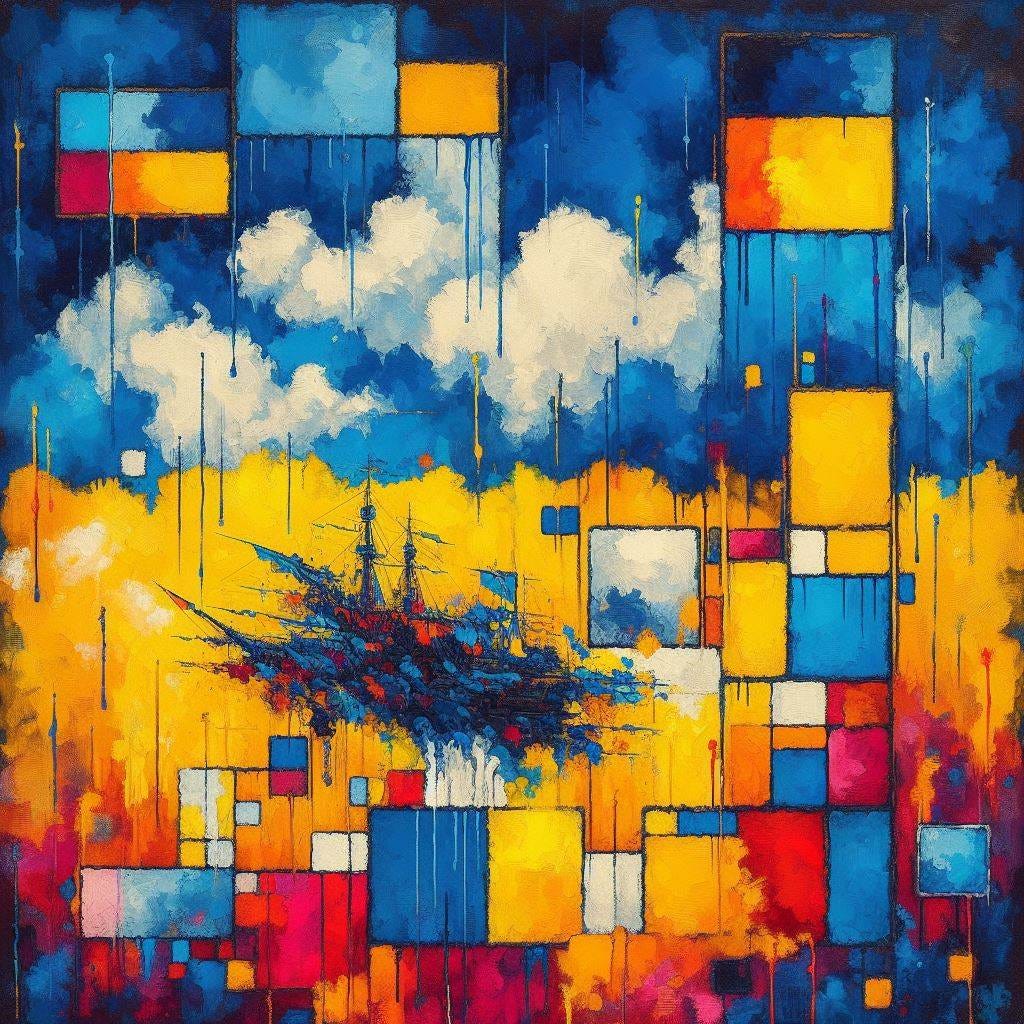
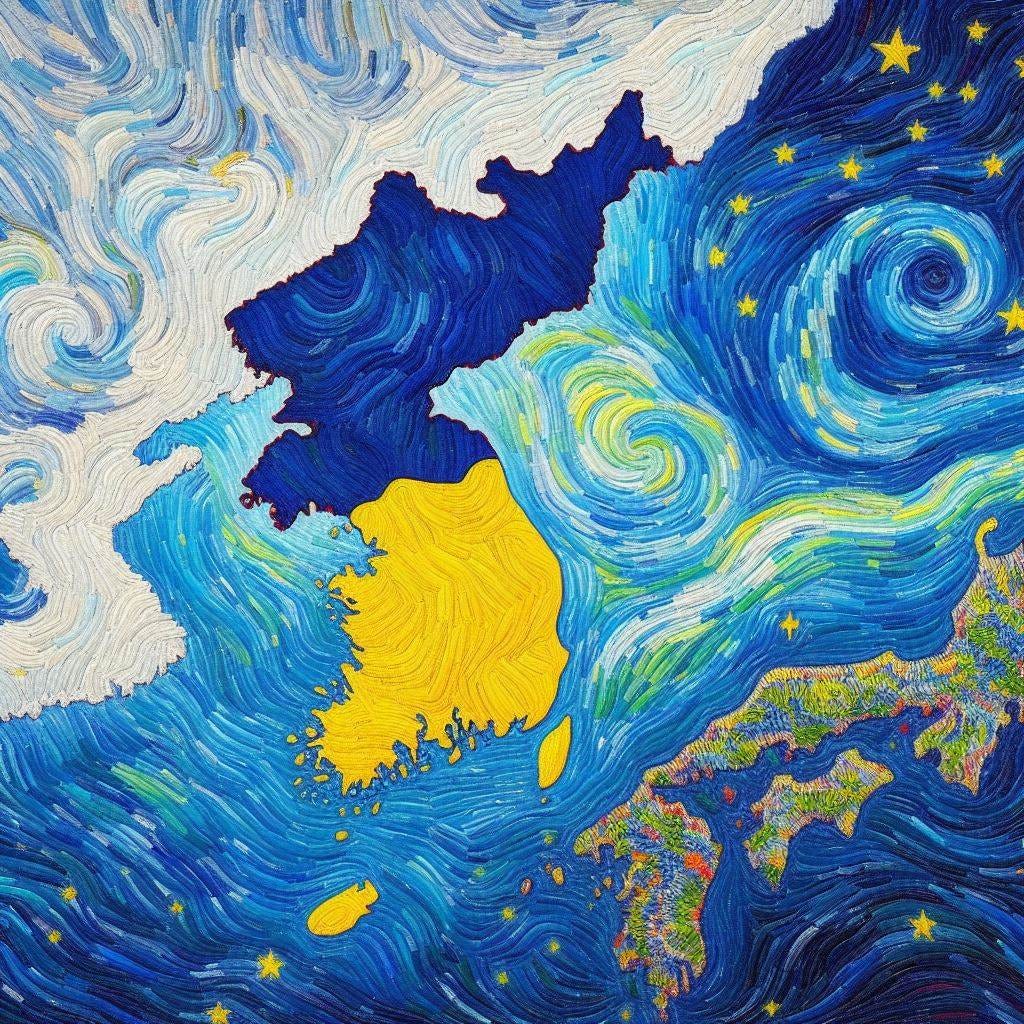
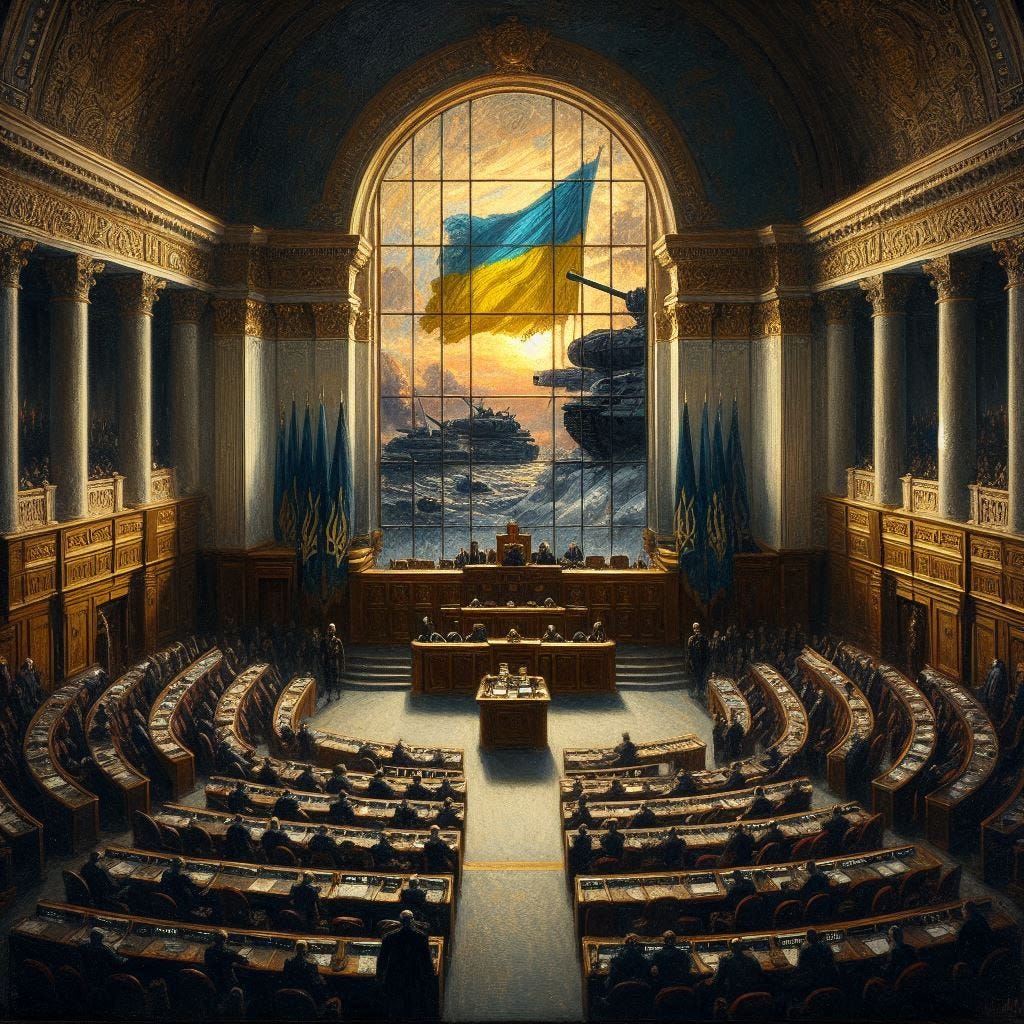
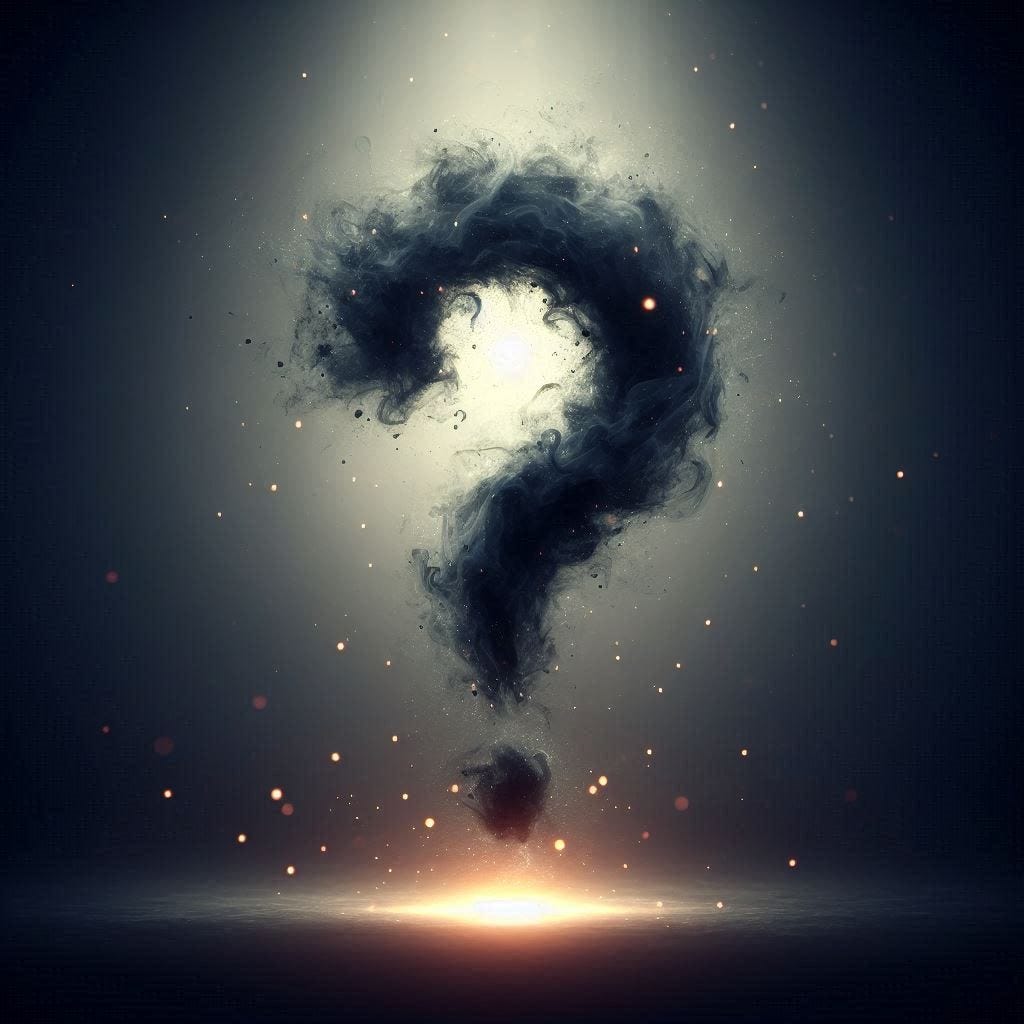
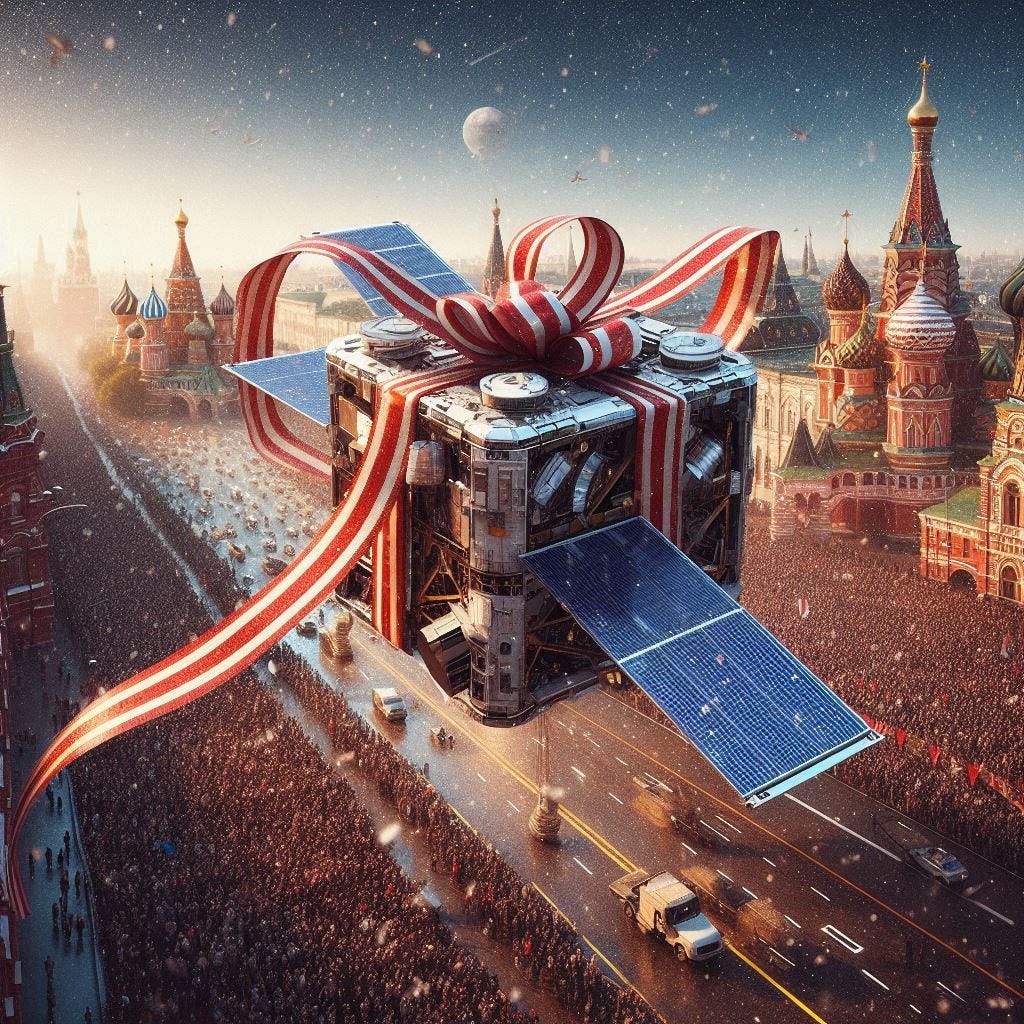
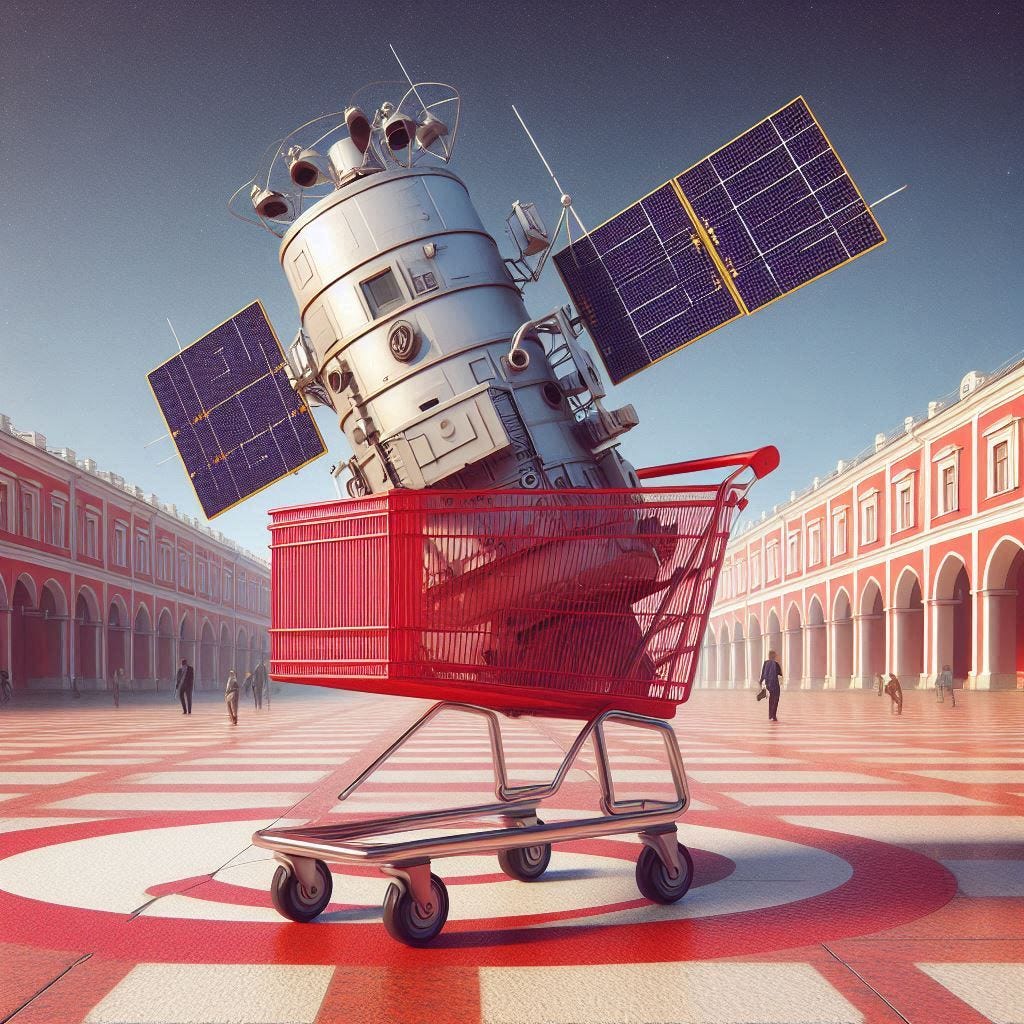
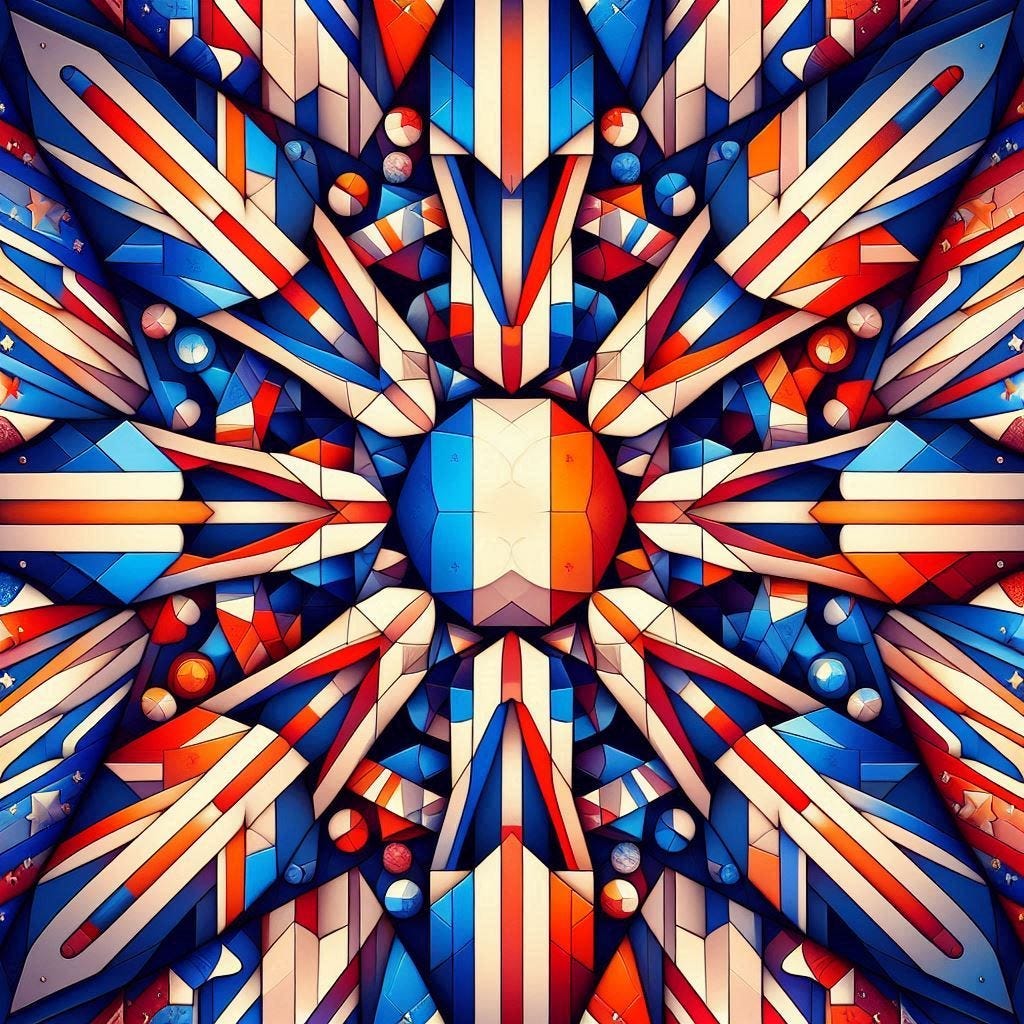
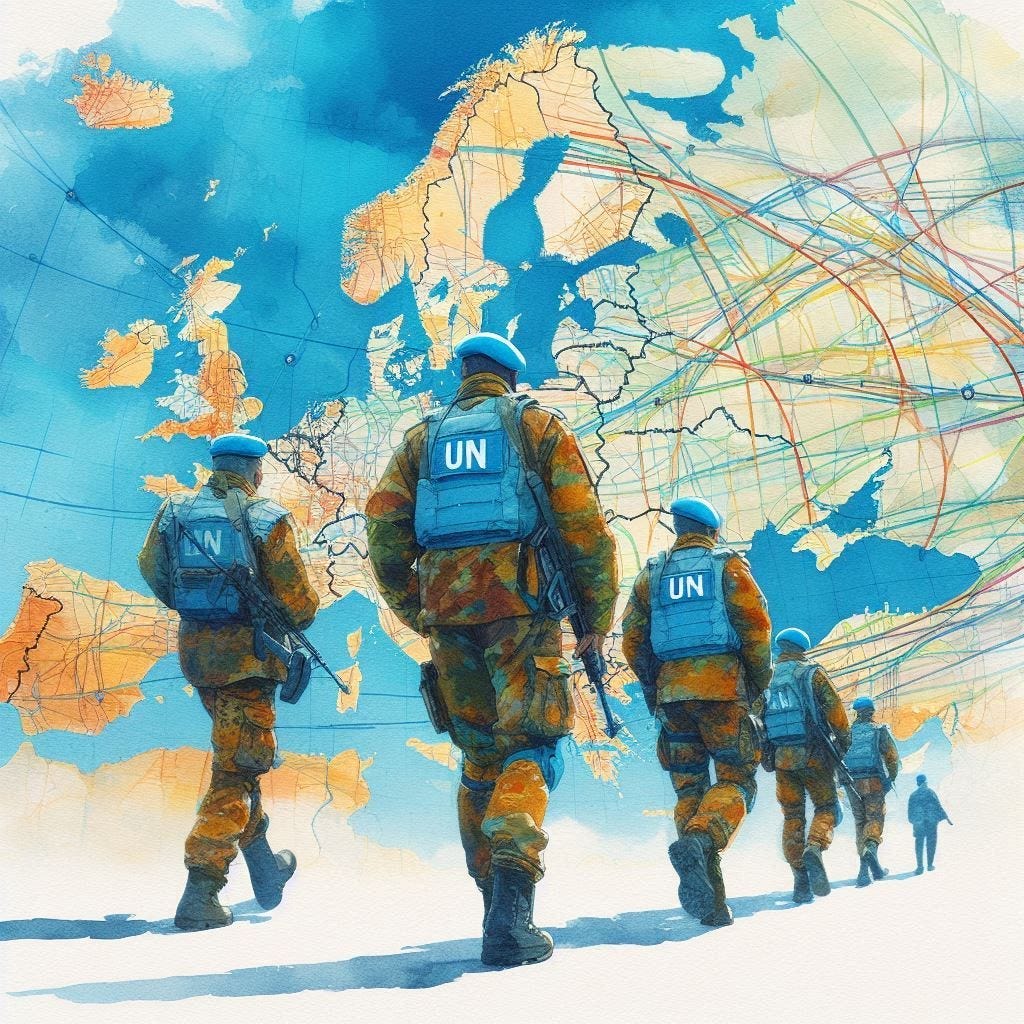
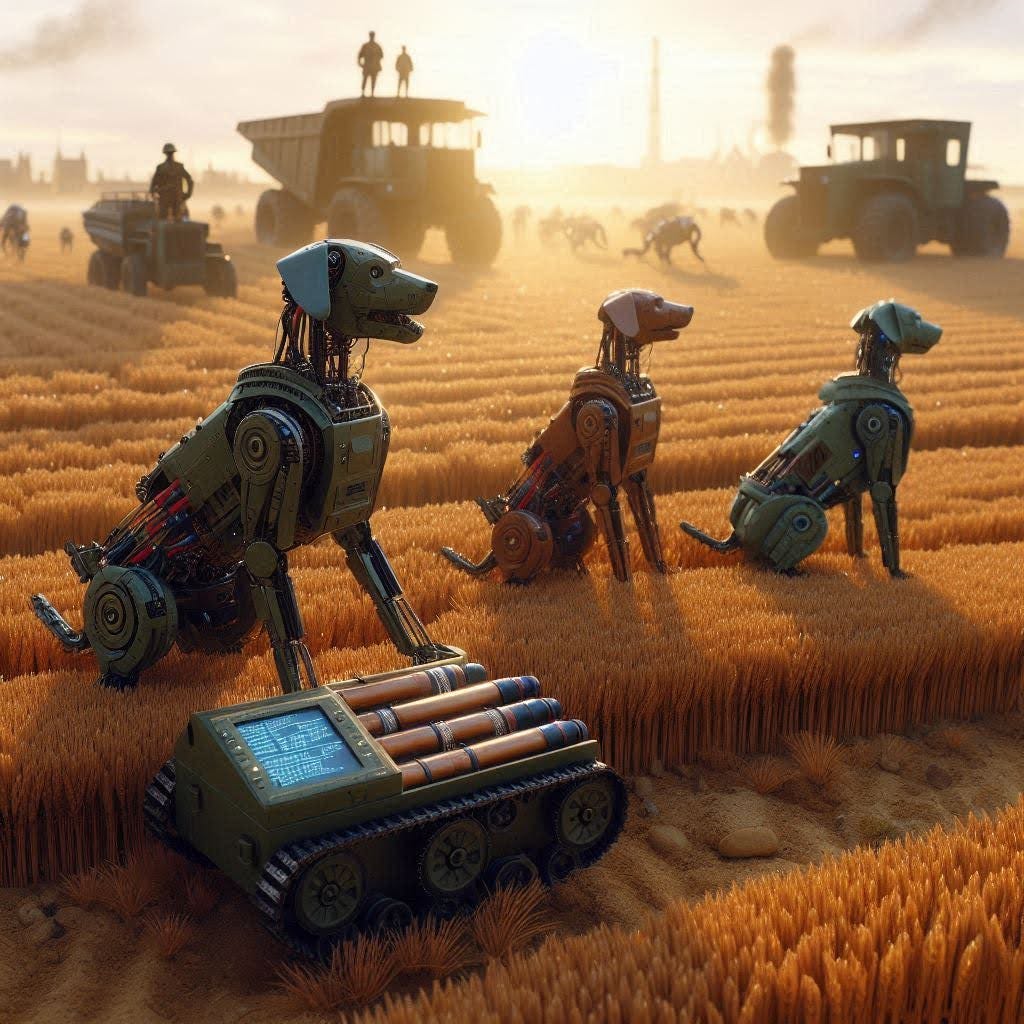
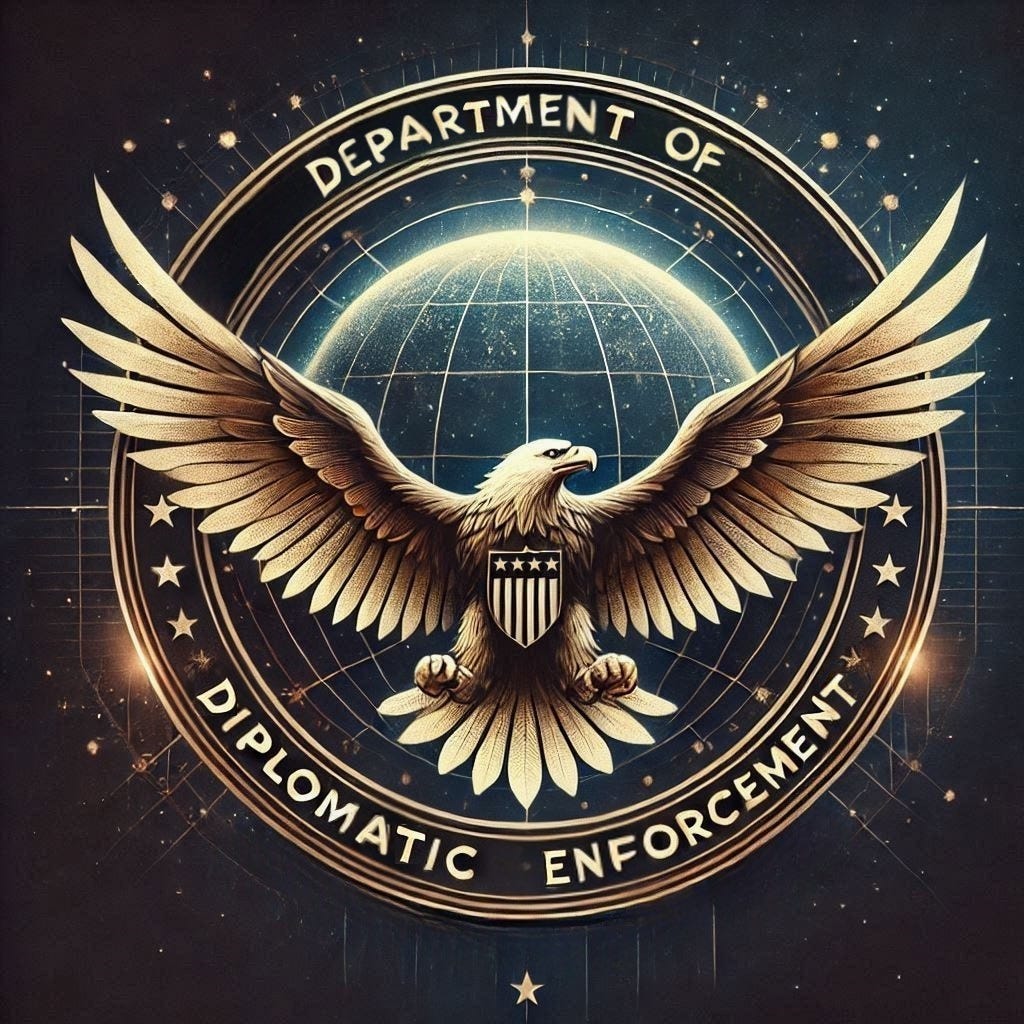
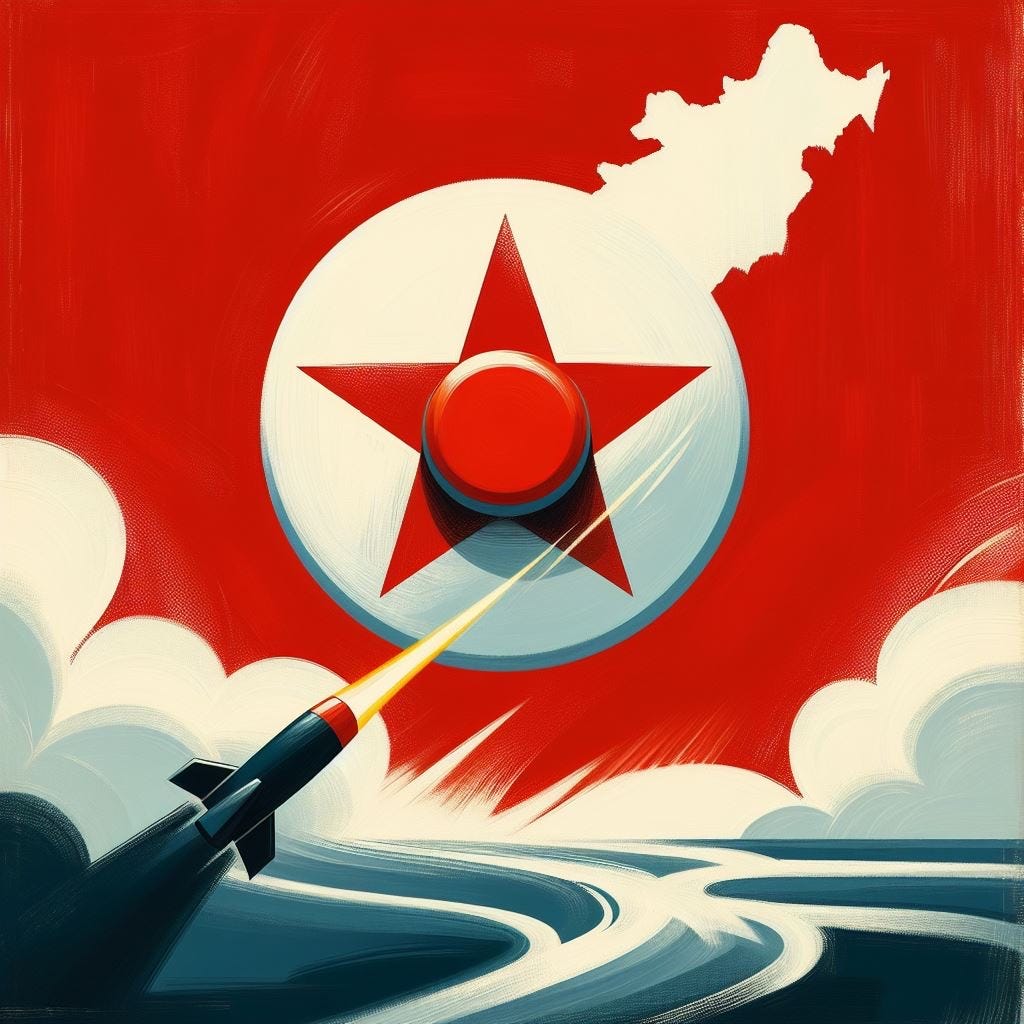
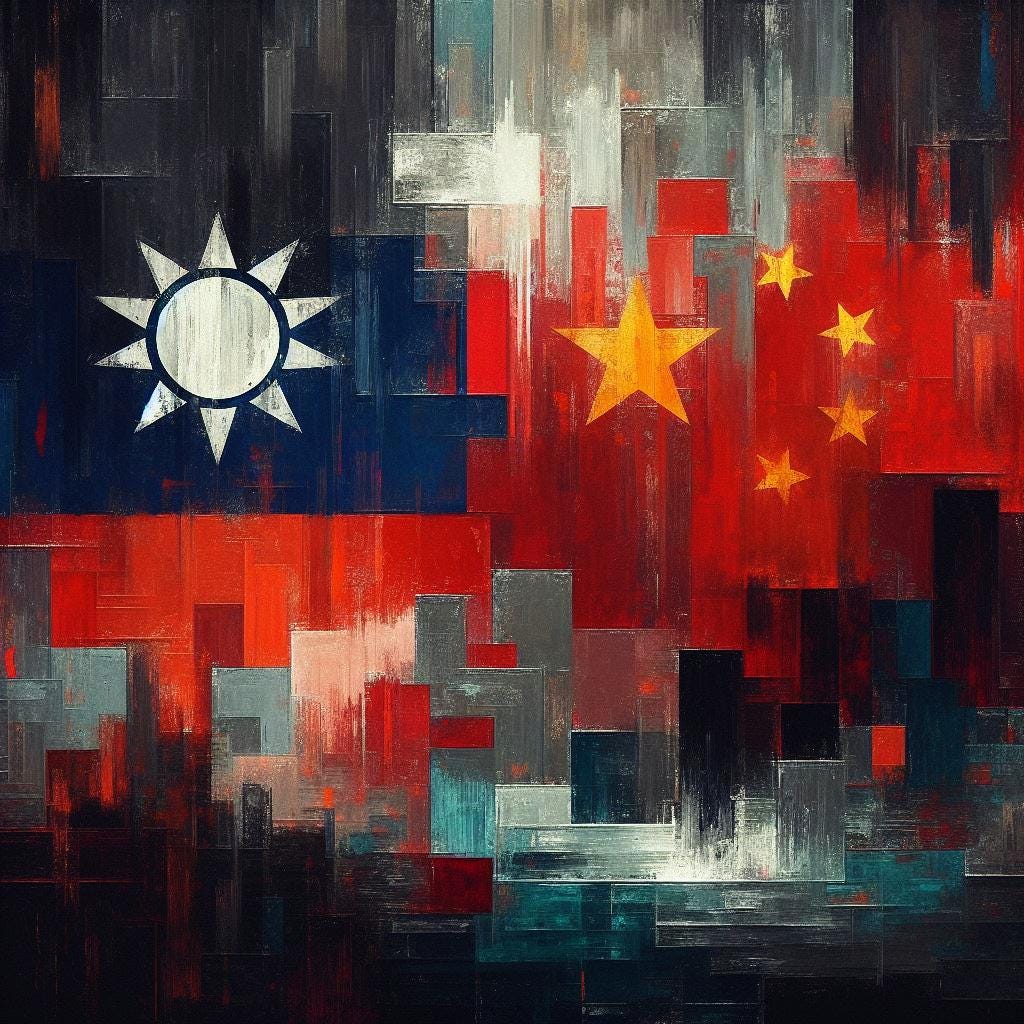
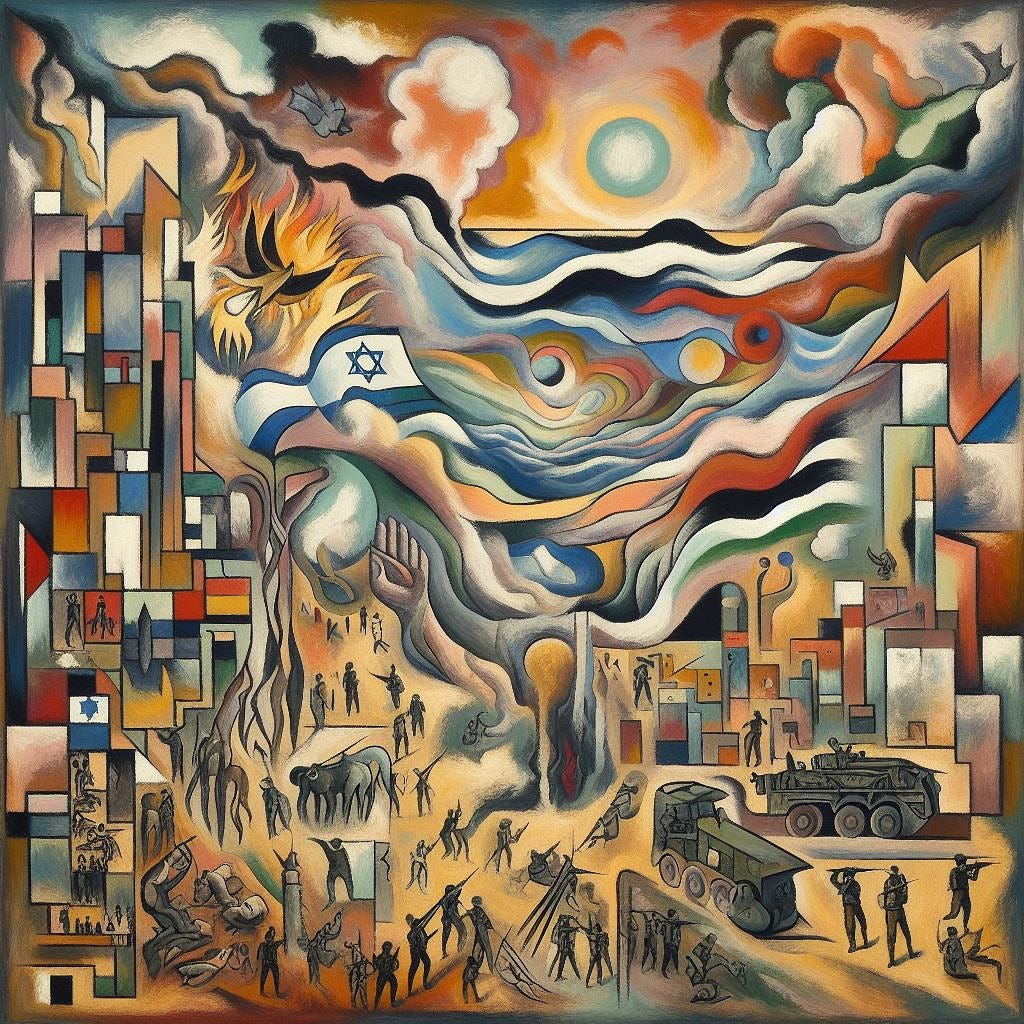

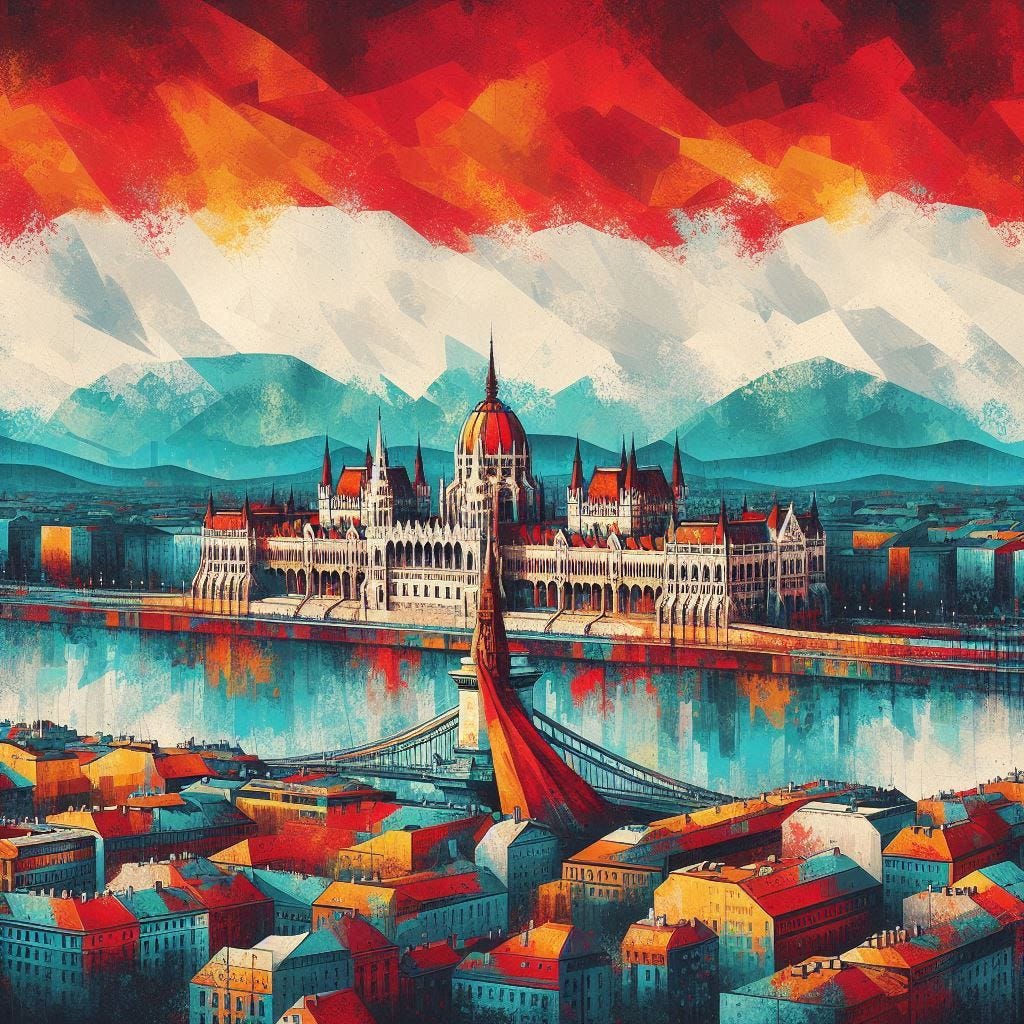


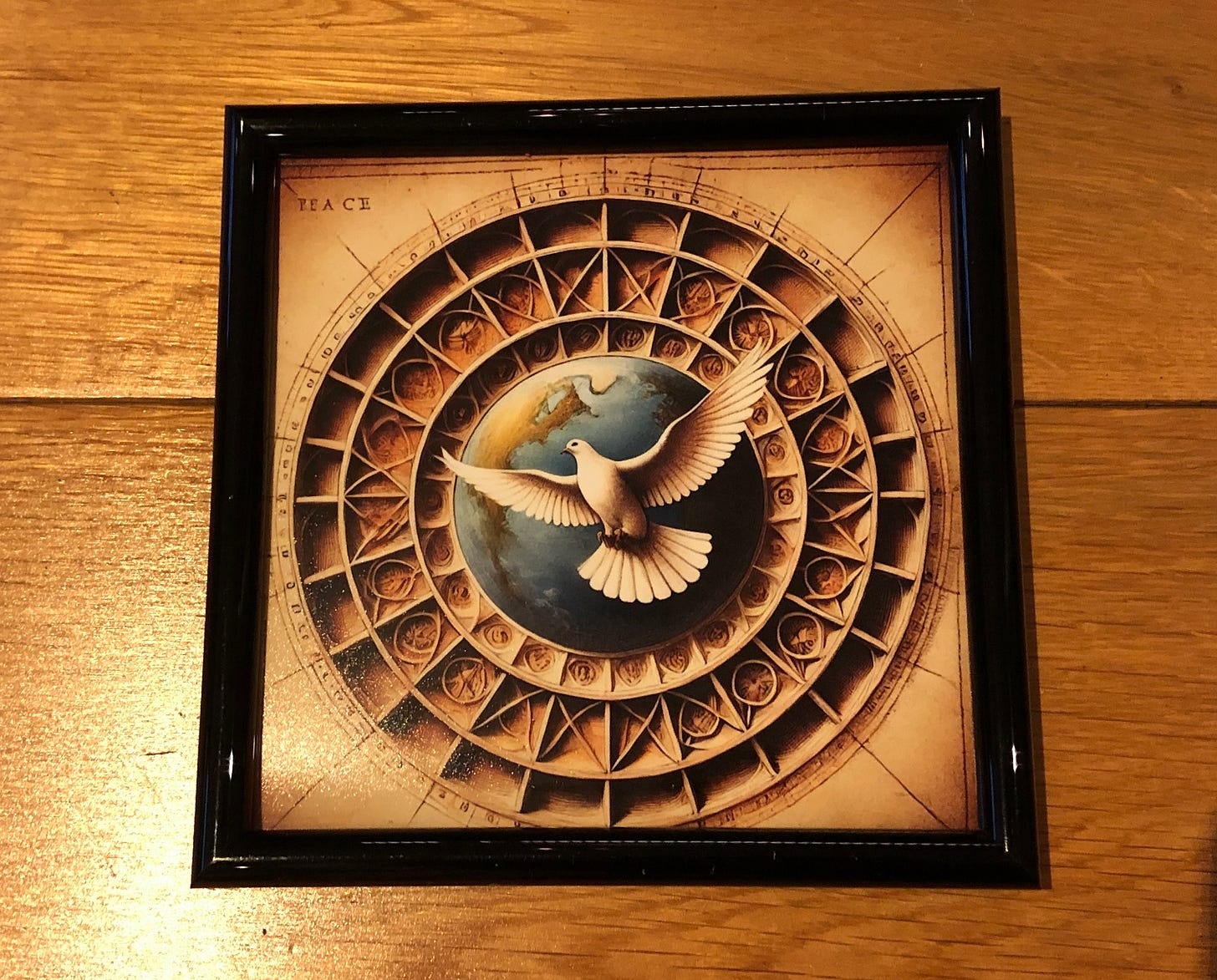
PS. In my third Substack Digest (in 2022) I noted my love of Young the Giant’s flag-themed album artwork. (Their music is incredible, too.)
https://edwardmdruce.substack.com/i/73822966/young-the-giant-album-artwork
I always loved flags as a kid. At one point in primary school, I think I near-memorised 195, for every country.
Very cool now to have powers to generate my own such artwork!